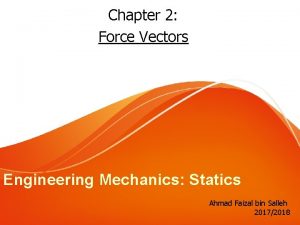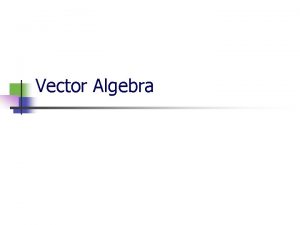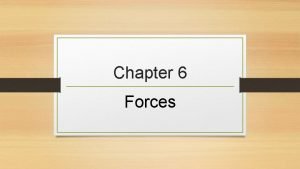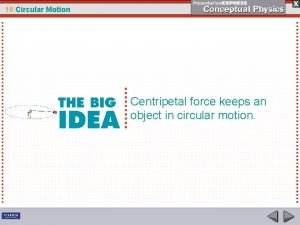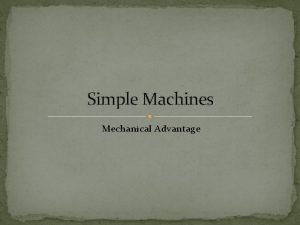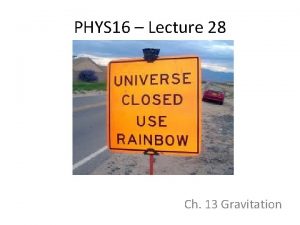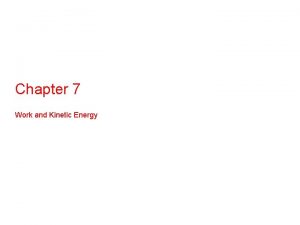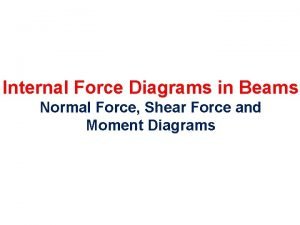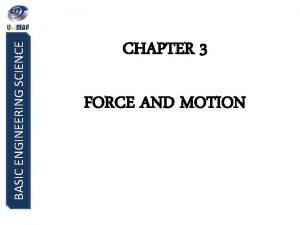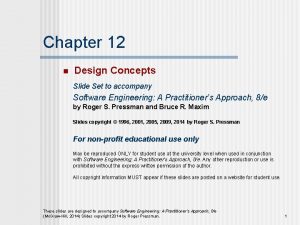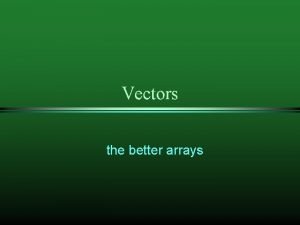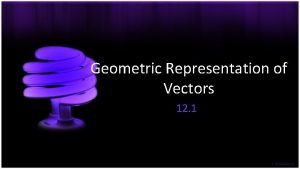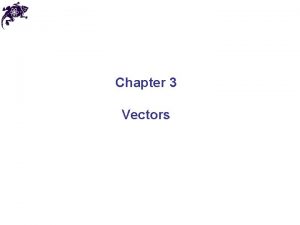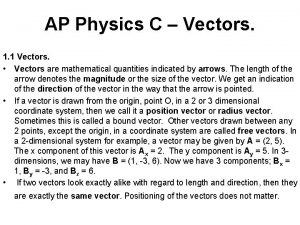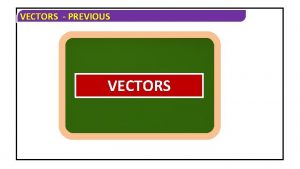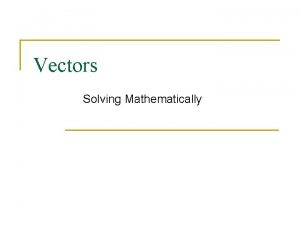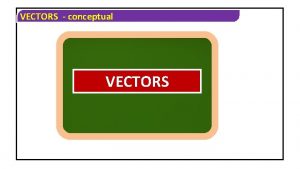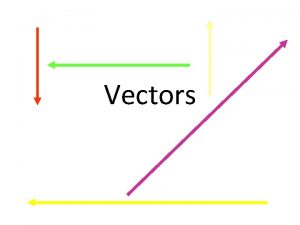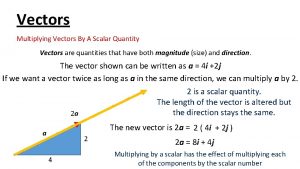Force Vectors Principles of Engineering 2012 Project Lead





























- Slides: 29

Force Vectors Principles of Engineering © 2012 Project Lead The Way, Inc.

Vectors Vector Quantities Have both a magnitude and direction Examples: Position, force, moment Vector Notation Vectors are given a variable, such as A or B Handwritten notation usually includes an arrow, such as

Illustrating Vectors are represented by arrows Include magnitude, direction, and sense Magnitude: The length of the line segment Magnitude = 3 30° +X

Illustrating Vectors are represented by arrows Include magnitude, direction, and sense Direction: The angle between a reference axis and the arrow’s line of action Direction = 30° counterclockwise from the positive x-axis 30° +x

Illustrating Vectors are represented by arrows Include magnitude, direction, and sense Sense: Indicated by the direction of the tip of the arrow Sense = Upward and to the right 30° +x

Sense +y (up) -x (left) +x (right) (0, 0) -y (down) -x (left) -y (down) +x (right)

Trigonometry Review Right Triangle A triangle with a 90° angle Sum of all interior angles = 180° Pythagorean Theorem: c 2 = a 2 + b 2 H se u n p) y h ( Opposite Side (opp) te ypo 90° Adjacent Side (adj)

Trigonometry Review Trigonometric Functions soh cah toa sin θ° = opp / hyp cos θ° = adj / hyp tan θ° = opp / adj Opposite Side (opp) te ypo H se u n p) y h ( 90° Adjacent Side (adj)

Trigonometry Application The hypotenuse is the Magnitude of the Force, F In the figure here, The adjacent side is the x-component, Fx The opposite side is the y-component, Fy use F Opposite Side ten po y H Fy 90° Adjacent Side Fx

Trigonometry Application sin θ° = Fy / F Fy= F sin θ° cos θ° = Fx / F Fx= F cos θ° tan θ° = Fy / Fx use F Opposite Side ten po y H Fy 90° Adjacent Side Fx Fx and Fy are negative if left or down, respectively.

Vector X and Y Components Vector Magnitude = 75. 0 lb Direction = 35. 0°CCW from positive x-axis +y Sense = right, up 35. 0° -x +x -y

Vector X and Y Components +y 35. 0° -x +x -y

Vector X and Y Components +y 35. 0° -x +x -y

Vector X and Y Components – Your Turn Vector Magnitude = 75. 0 lb +y Direction = 35. 0°CW from positive x-axis Sense = right, down -x +x 35. 0° -y

Vector X and Y Components – Your Turn +y -x +x 35. 0° -y

Vector X and Y Components – Your Turn +y -x +x 35. 0° -y

Resultant Force Two people are pulling a boat to shore. They are pulling with the same magnitude.

Resultant Force List the forces according to sense. Label right and up forces as positive, and label left and down forces as negative.

Resultant Force Sum (S) the forces Magnitude is 122. 9 lb Direction is 0° from the positive x-axis Sense is right

Resultant Force • Magnitude is 123 lb Direction is 0° from the positive x-axis Sense is right

Resultant Force Determine the sense, magnitude, and direction for the resultant force.

Resultant Force Find the x and y components of vector C.

Resultant Force Find the x and y components of vector D.

Resultant Force List the forces according to sense. Label right and up forces as positive, and label left and down forces as negative.

Resultant Force Sum (S) the forces Sense is right and up.

Resultant Force Draw the x and y components of the resultant force. Two equivalent ways to draw the X and Y components 496. 4 lb 59. 8 lb

Resultant Force Solve for magnitude. 59. 8 lb 496. 4 lb Magnitude is 500. lb

Resultant Force Solve for direction. 500. lb 59. 8 lb 496. 4 lb Direction is 7° counterclockwise from the positive x-axis.

Resultant Force Draw the resultant force (FR) Magnitude = 500. lb Direction = 7° CCW from positive x-axis Sense = right and up 500. lb 7°
 Engineering mechanics chapter 2
Engineering mechanics chapter 2 Force vectors
Force vectors Frequency dependence of dielectric constant
Frequency dependence of dielectric constant Jira project lead
Jira project lead Rit withdraw from class
Rit withdraw from class Design brief example pltw
Design brief example pltw Tension force contact or noncontact
Tension force contact or noncontact Which arrow below represents the direction of acceleration
Which arrow below represents the direction of acceleration Long range force
Long range force If you whirl a tin can on the end of a string
If you whirl a tin can on the end of a string How does mechanical advantage work
How does mechanical advantage work What is net force
What is net force Centripetal force in geography
Centripetal force in geography Air resistance contact or non contact
Air resistance contact or non contact Is electric potential conservative
Is electric potential conservative Centripetal force and gravitational force
Centripetal force and gravitational force Normal force and gravitational force
Normal force and gravitational force Internal force diagrams
Internal force diagrams Engineering science force
Engineering science force Engineering mechanics chapter 2
Engineering mechanics chapter 2 Air force center for engineering and the environment
Air force center for engineering and the environment What is system in software engineering
What is system in software engineering Forward engineering in software engineering
Forward engineering in software engineering Engineering elegant systems: theory of systems engineering
Engineering elegant systems: theory of systems engineering Engineering elegant systems: theory of systems engineering
Engineering elegant systems: theory of systems engineering Forward and reverse engineering
Forward and reverse engineering Design principles in software engineering
Design principles in software engineering Principles of green engineering
Principles of green engineering Engineering principles of design
Engineering principles of design Design principles in software engineering
Design principles in software engineering
